Miner Road is an architecture of its landscape. Sitting quietly in the site, the form of the house resists casual articulation: the material use is direct — shedding unnecessary detail, and space is continuous — connecting the site and building. As an architecture, it avoids the picturesque and instead associates with the experience of the landscape. That landscape, the oak woodland hills of the East Bay, is an easy one for an architect to love; it is one of structure.
You see in this landscape how it is made, and Miner Road shares this generative nature. The architecture gathers up these landscape qualities and expresses them not as representations but as experiences. Through reflection without mimicry, Miner Road is part of the place. We see this house as furthering his conversation with a way of working, as a distillation of principles, a design ever closer to the truth of the matter. Miner Road is a new piece of a shared fabric emerging with greater clarity. This perspective is key to understanding Miner Road.
This architecture did not emerge from a single idea, and it is not explained with a slogan or by an algorithm. Miner Road is an architecture of narrative, a story about materials, and a way of living in a place. In a world of instant modeling and photoshopped environments, the design drawings offer a different paradigm, one constructed through layered actions. They reveal a process that is as generative as the actions that made the landscape. Lines extend beyond containments, parts are intensified as they are thought about, with space rendered as continuous.
One particular plan shows structure and elements rendered dark as anchors for the space with construction lines extending past the building edge, claiming organizational ambition for the space beyond. In this drawing, at the dining room, lines and tones extend beyond the edge of the room to the terrace beyond. Of course, these lines don’t represent material moving between boundaries, but instead, they show the light defining the relationship between the dining room and the terrace. In this architecture, the building of light and space is much more material and real than the definition of its boundaries.
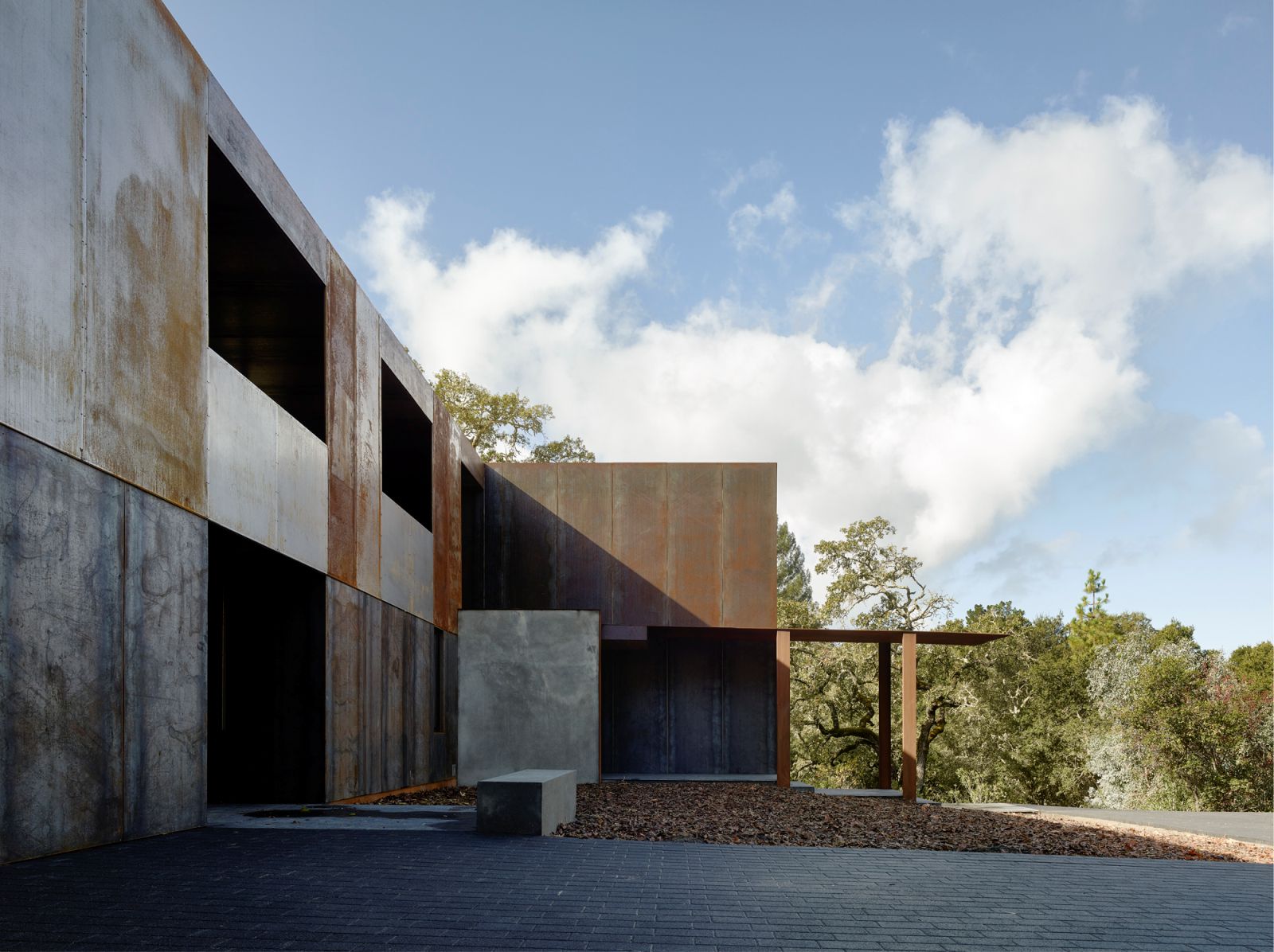
Photo © Joe Fletcher
Elements slide by each other, joined by light. The openings are not windows, they are relational extensions of zones connecting inside and out. Open corners offer an even more continuous relationship to the light. The mullions of the glass, acting as the branches of the oaks beyond, screen the view into the layered landscape. Corten panels surfacing the house retain their integrity as steel sheets with a modular tightness and then pull away and become a screen at the porch. Here the steel is allowed to be two-sided, further revealing its qualities. Finally, the steel offers its thinness and strength as a canopy for entry.
The steel is not limited to just surfacing. It enjoys a more independent life, generating the landscape of the architecture through its realness. The site came with a house that needed to come down and did, leaving a footprint and fireplace. The footprint with its chimney became a ruin to occupy and extend. That action allowed the oak trees, which had grown up around the former house to remain. Those trees, the chimney, and the ruins, in Greg’s open process, became elements to be read, a structure to be understood, something to build with.
Much of our environment today is virtual, a digital construction. Places become less real, less connected to the world. Landscapes are more like postcards, not a connecting fabric, and certainly not material to build with. Buildings seem disembodied from sites, like the digital territory they emerge from. As a culture, we are confused by the scenographic, accepting representations in place of the real thing. A placeless architecture is built the same without regard to circumstances, location, or landscape. This is a sad state of affairs, leading to a loss of the real and general confusion.
This then is the critical contribution of Miner Road. It resists the scenographic and offers the real, the tectonic. It is a reading of the particular and tangible and an extension of architecture as integral to the landscape it is part of. It is an expression that is not a representation but an experience. The architecture does not look like the landscape but rather acts like it. In the space, the light, the materials, and the way of living it supports, Miner Road lets us associate with the qualities of that landscape, to move closer to it, and to better understand it. Source by Faulkner Architects.
- Location: Orinda, CA, USA
- Architect: Faulkner Architects
- Project Team: Greg Faulkner, Darrell Linscott, Jenna Shropshire, Christian Carpenter, Richard Szitar
- Contractor: Ethan Allen Construction
- Year: 2017
- Photographs: Joe Fletcher, Courtesy of Cameron Macallister Group

Photo © Joe Fletcher 
Photo © Joe Fletcher 
Photo © Joe Fletcher 
Photo © Joe Fletcher 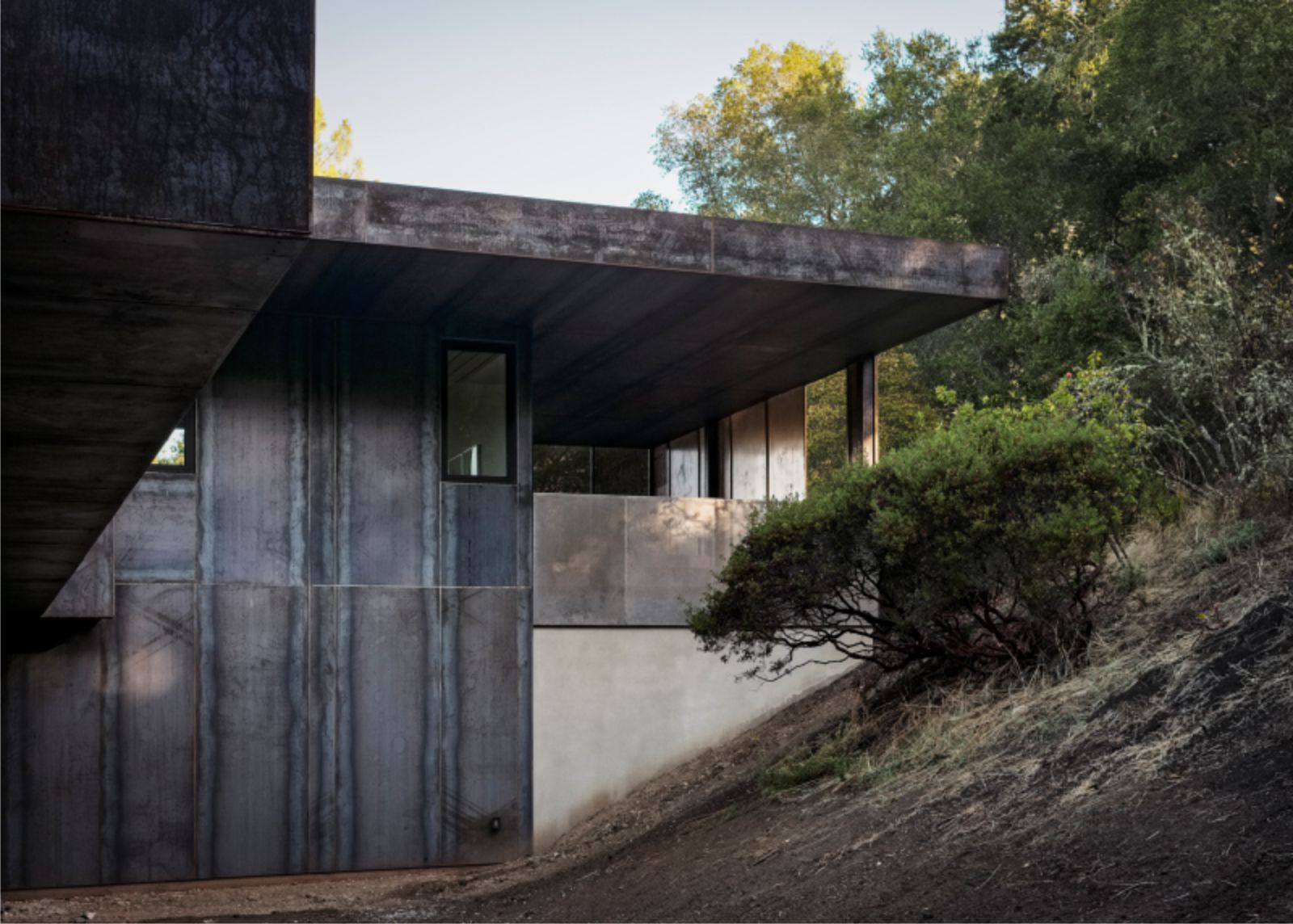
Photo © Joe Fletcher 
Photo © Joe Fletcher 
Photo © Joe Fletcher 
Photo © Joe Fletcher 
Photo © Joe Fletcher 
Photo © Joe Fletcher 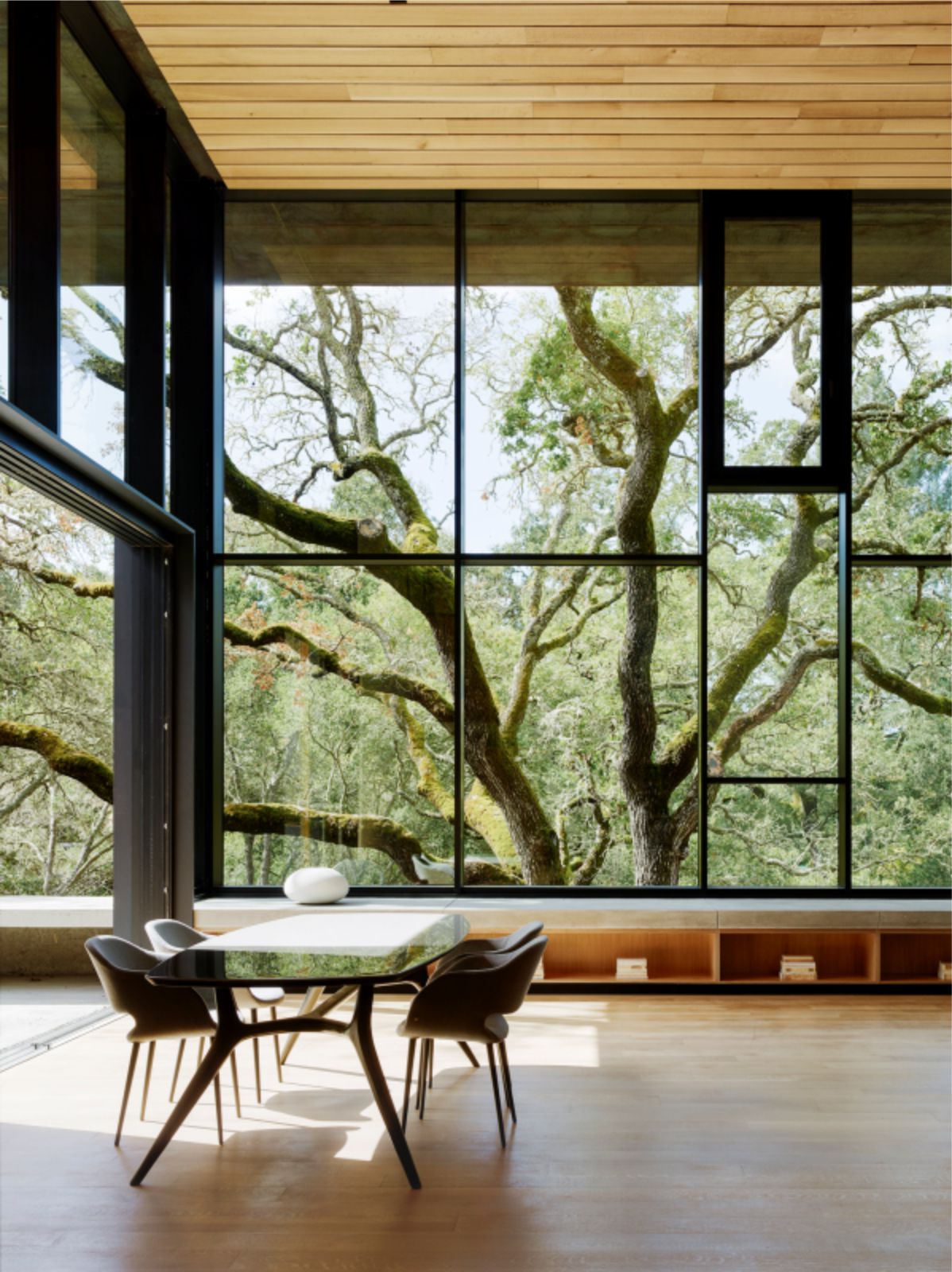
Photo © Joe Fletcher 
Photo © Joe Fletcher 
Photo © Joe Fletcher 
Photo © Joe Fletcher 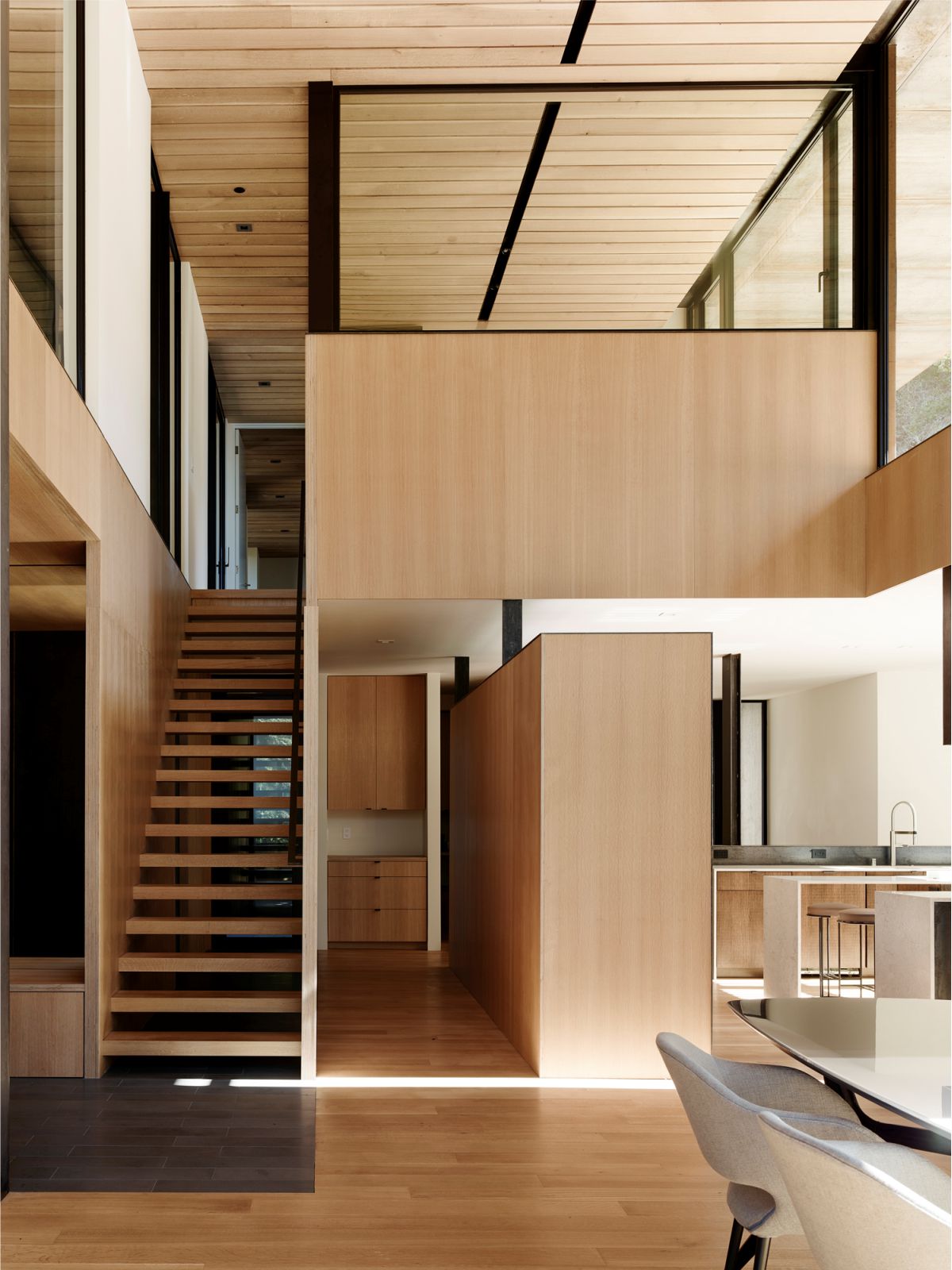
Photo © Joe Fletcher 
Photo © Joe Fletcher 
Photo © Joe Fletcher 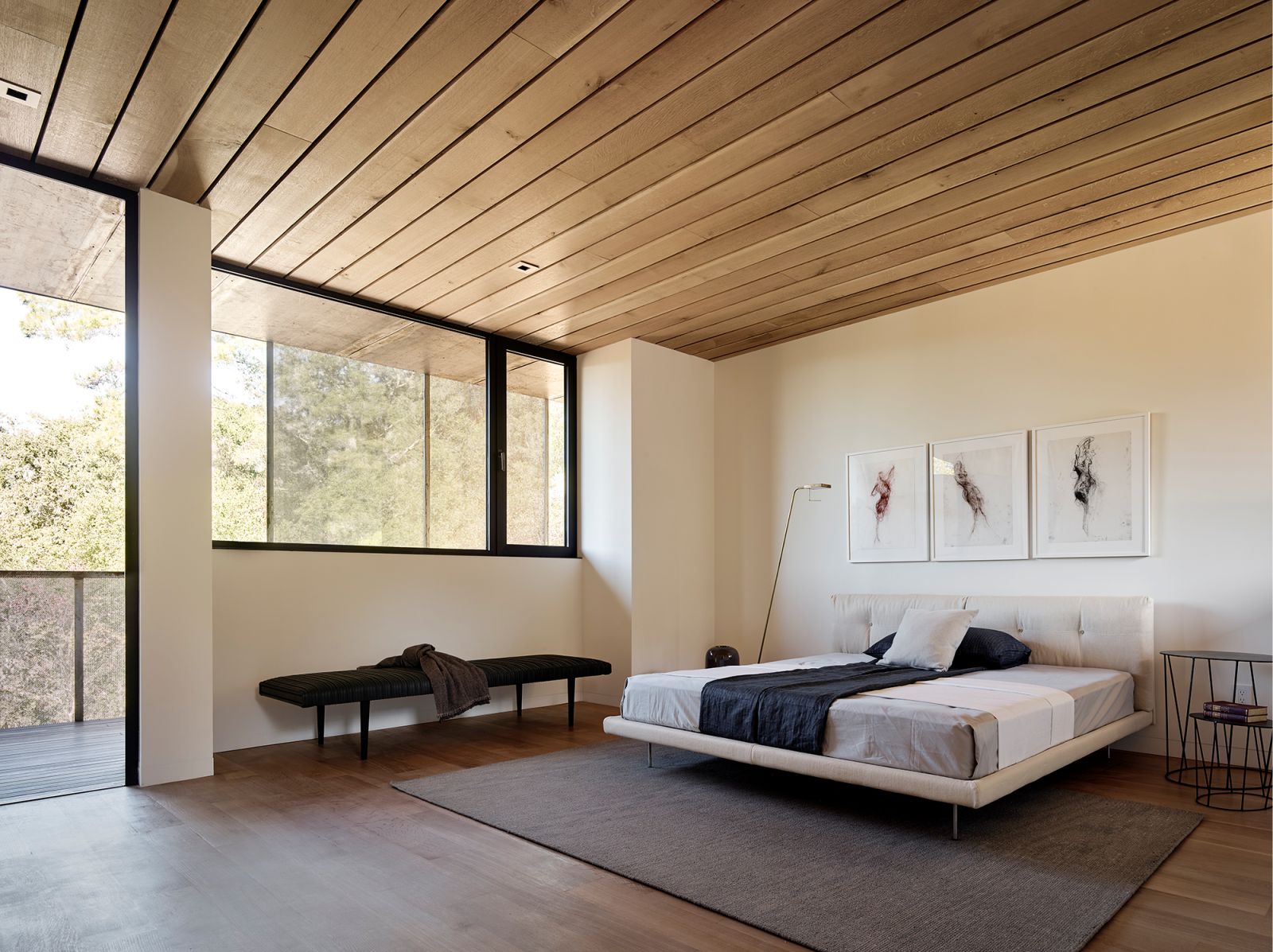
Photo © Joe Fletcher

